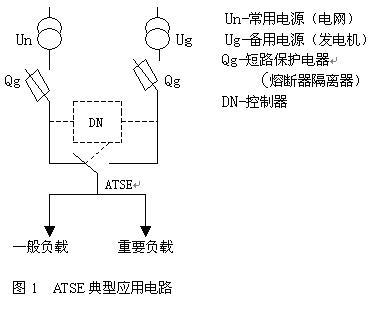Release time:2024-04-24
The controller is mainly used to detect the working status of the monitored power supply (two circuits). When a fault occurs in the monitored power supply (such as any phase loss, undervoltage, loss of voltage, or frequency deviation), the controller sends an action command, and the switch body automatically switches from one power supply to another with the load. Figure 1 is a typical ATSE application circuit. The controller is connected to the incoming terminal of the switch body.

There are currently four types of products used in the domestic market for two-way power conversion appliances. The first type is ATSE composed of contactors; The second type is ATSE composed of circuit breakers; Category 3: Products that use electric load switches (in accordance with GB14048.3 standard) to complete the conversion of two power sources; The fourth category is PC grade (integrated) ATSE.
The advantage of ATSE products composed of contactors is their low price; The disadvantage is that the coil is prone to burning due to long-term power consumption, the product has low connection and breaking capacity, the contact is prone to shaking and welding, and its product reliability is very low, especially in the case of explosive accidents during load conversion. This type of product has been phased out and prohibited from use abroad. To overcome the shortcomings of the above products, circuit breaker manufacturers have launched CB level ATSE. CB level ATSE is composed of circuit breakers and mechanical interlocking. CB level ATSE is mechanically maintained, which improves the making and breaking capabilities of contacts, but it is not an ideal ATSE product (see the third paragraph of this article).
Therefore, a third type of product has emerged in the market - electric load switches, which are composed of two load switches combined with an electric operating device, and the reliability of product operation has been greatly improved. However, the contact arc extinguishing system is designed with the requirement of breaking one arc, and there are also unreasonable factors when used for switching between dual power circuits (see the third paragraph of this article). Therefore, the market is calling for ideal ATSE products. The PC grade (integrated) ATSE product combines the advantages of the above products and overcomes their disadvantages, making it an ideal dual power conversion product in the domestic and international markets.